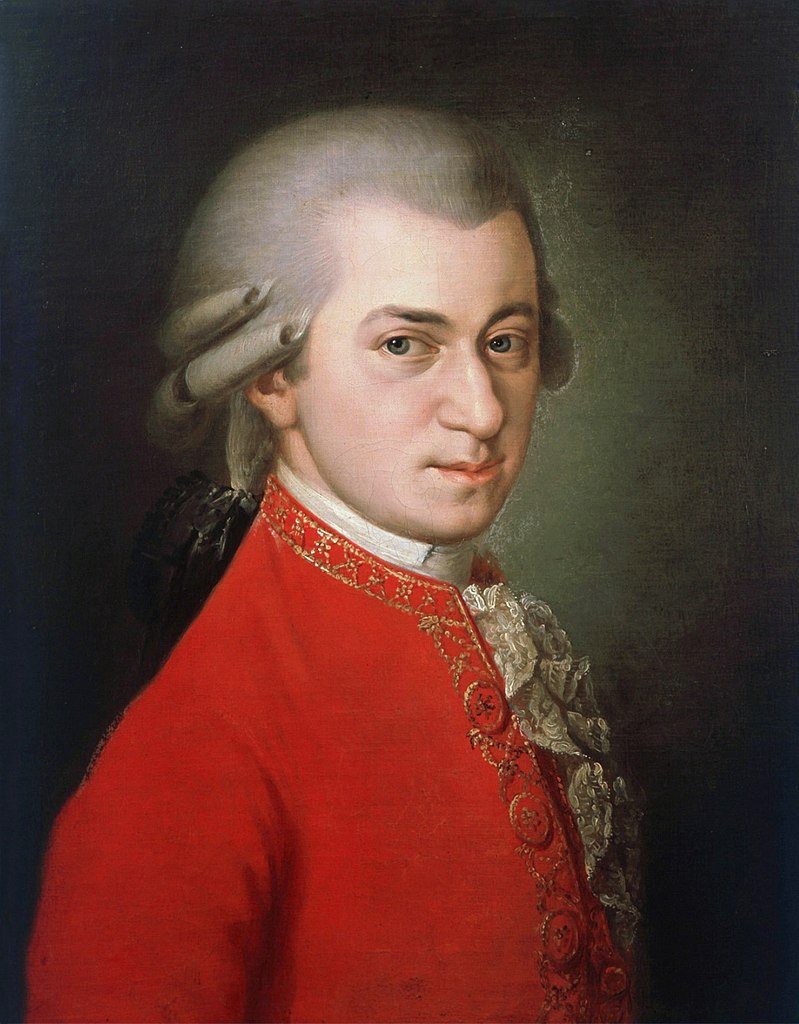 After several warm days, we’re back to February’s rain, mush, and slush. That groundhog should have slept in. Nonetheless, several bright spots are keeping me warm include a new webinar in our series What’s So Great About? The spot of honor this time goes to Mozart.
After several warm days, we’re back to February’s rain, mush, and slush. That groundhog should have slept in. Nonetheless, several bright spots are keeping me warm include a new webinar in our series What’s So Great About? The spot of honor this time goes to Mozart.
Webinar: Feb. 11 at 8 pm EST
To be honest, I’ve never been a Mozartomane, keeping my serious crushes for composers like Prokofiev and Liszt. But Mozart’s music is revered in the Western Canon for very good reasons. Parsing through some of those reasons should make an interesting evening.
Waves of Mozart-mythology still swirl around the poor man. Some were fostered, although not started, by Alexander Pushkin’s “little tragedy” Motsart i Sal’eri, published forty-one years after Mozart’s death, wherein rumors that court composer Antonio Salieri poisoned Mozart found a fine dramatic home. Anyone knowing (and adoring, as I do) Miloš Forman’s masterful film Amadeus (1984) knows another theatrical version of that complicated, jealousy-scarred relationship.
Looking around for other material, I found (to my astonishment) a step-by-step discourse on how Mozart faked his own death, returning later in the persona of Georg Nikolaus von Nissen, a Danish diplomat whom Mozart’s wife Constanze met in 1797 and married later in 1809. Goodness gracious! Still, such a myth (and myth it is) would help explain how Constanze went from a neutral party during Mozart’s compositional life to a mastermind at marketing his music and profiting thereby. Still, I decided this foray wouldn’t make the cut.
 But Constanze (d. 1842) has to be a player in any discussion of Mozart’s legacy. Furthermore, she wasn’t the only one who profited from his legacy. A coterie of people who knew Mozart, worked with or for him, and sang in his operas was able to amplify and extend their reputations by that credential.
But Constanze (d. 1842) has to be a player in any discussion of Mozart’s legacy. Furthermore, she wasn’t the only one who profited from his legacy. A coterie of people who knew Mozart, worked with or for him, and sang in his operas was able to amplify and extend their reputations by that credential.
Still, as interesting as these stories are, the prime question remains: why does Mozart’s music continue to be highly valued? For that matter, how did we come to a place where we have CDs claiming to make our kids smarter if they listen to Mozart?
Taking on the latter question will be fun. But the former question opens up the most issues. Answers include the timing of his career (exactly as the fortepiano evolved from a harpsichord-based technique into what would ultimately become modern piano-playing), as well as Mozart’s infallible understanding of the use of melody, harmony, rhythm, even orchestration, in the service of effective drama—a surprisingly modern sense of drama at that!
Dwarfing all of these considerations, though, is a basic fact worded beautifully in a Mozart biography published in 1995 by one of my favorite “grand old musicologists,” Maynard Solomon:
Mozart’s music is endlessly repeatable.
In four words, Solomon nails what makes any work of art “classical.” “Endlessly repeatable” means every generation can encounter, grasp, absorb, and pass on a work’s substance. Why else does each new generation of children light up upon first hearing the da-da-da dah “fate motive“ of Beethoven’s Fifth Symphony? What else explains the thrill, no matter our age, at hearing “King of Kings!” whenever Handel’s Hallelujah Chorus resounds through the air? For that matter, why are we still singing Happy Birthday to the same tune . . . but wait, that is a different essay for a different day.
So, let me leave you with Solomon’s prescription for what yields a classical sense of quality: that which is endlessly repeatable. His words extend to so many things: the joy of hanging the Christmas wreath above the mantel, the fun of pulling out the summer frocks (particularly when you live up North), the pleasure of your dog’s enthusiasm when you wearily turn the key in the door each evening. Those experiences are not so different from the expressive power brought us through great art that, decade after decade, bespeaks its message and its greatness.



